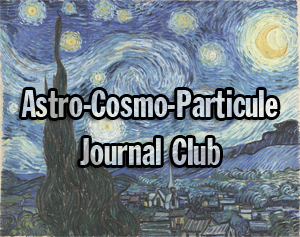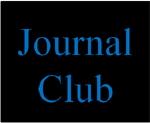Colloquium diei: “Há futuro para a Ciência brasileira?”
 A Ciência brasileira adentra o século XXI submetida a múltiplos desafios, externos e internos. O custo financeiro da pesquisa científica tem crescido exponencialmente, e os recursos disponíveis são cada vez mais escassos. A classe política e as empresas, que decidem pelo financiamento público e privado da ciência, clamam por radical engajamento em inovação e patentes, mantendo a visão enviesada de que a Ciência brasileira somente está interessada em papers. A sociedade em geral desconhece o impacto da ciência em seu bem estar cotidiano, e não valoriza a ciência como solução para os grandes problemas nacionais. Um exemplo disso foi a completa ausência do tema na discussão política eleitoral recente. O cenário interno à ciência apresenta-se igualmente complexo, com instituições engessadas pela gestão pública ineficiente, sitiadas por pressões corporativas, e que não valorizam devidamente a qualidade na pesquisa e o mérito acadêmico na progressão da carreira dos docentes/pesquisadores. Nas avaliações de projetos e propostas pelas agências de financiamento à pesquisa, os comitês de pares insistem em apenas contabilizar a quantidade de publicações, e resistem em considerar entre seus critérios os diferentes impactos da pesquisa, quais sejam científicos, econômicos, sociais, educacionais ou culturais. O ensino de graduação e, crescentemente, o de pós-graduação, seguem modelos antiquados que não priorizam a criatividade, a iniciativa própria e o empreendedorismo. Resta a pergunta: Há Futuro para a Ciência Brasileira? Vamos discutir isso neste colóquio.
A Ciência brasileira adentra o século XXI submetida a múltiplos desafios, externos e internos. O custo financeiro da pesquisa científica tem crescido exponencialmente, e os recursos disponíveis são cada vez mais escassos. A classe política e as empresas, que decidem pelo financiamento público e privado da ciência, clamam por radical engajamento em inovação e patentes, mantendo a visão enviesada de que a Ciência brasileira somente está interessada em papers. A sociedade em geral desconhece o impacto da ciência em seu bem estar cotidiano, e não valoriza a ciência como solução para os grandes problemas nacionais. Um exemplo disso foi a completa ausência do tema na discussão política eleitoral recente. O cenário interno à ciência apresenta-se igualmente complexo, com instituições engessadas pela gestão pública ineficiente, sitiadas por pressões corporativas, e que não valorizam devidamente a qualidade na pesquisa e o mérito acadêmico na progressão da carreira dos docentes/pesquisadores. Nas avaliações de projetos e propostas pelas agências de financiamento à pesquisa, os comitês de pares insistem em apenas contabilizar a quantidade de publicações, e resistem em considerar entre seus critérios os diferentes impactos da pesquisa, quais sejam científicos, econômicos, sociais, educacionais ou culturais. O ensino de graduação e, crescentemente, o de pós-graduação, seguem modelos antiquados que não priorizam a criatividade, a iniciativa própria e o empreendedorismo. Resta a pergunta: Há Futuro para a Ciência Brasileira? Vamos discutir isso neste colóquio.




 O seminário terá como objetivo discutir os princípios que norteiam a avaliação do processo de ensino e aprendizagem, suas diferentes modalidades: diagnóstica, formativa e somativa, assim como seu caráter social e pedagógico nos diferentes níveis de ensino.
O seminário terá como objetivo discutir os princípios que norteiam a avaliação do processo de ensino e aprendizagem, suas diferentes modalidades: diagnóstica, formativa e somativa, assim como seu caráter social e pedagógico nos diferentes níveis de ensino. I aim at developing a geometrical formulation of thermodynamics by employing contact geometry and associated notions. A geometric formulation of thermodynamics is of interest for several reasons. Firstly, geometry serves as a language in which every physical theory can be formulated, it provides geometric tools and notions which can be employed to infer new principles and ideas, and in general promotes mathematical beauty in physics. Secondly, a geometrisation of thermodynamical theories would help to systemize and unify the phenomenologically orientated formulations and derivations of thermodynamical phenomena and potentially be of great use in the description of non-equilibrium scenarios. And finally, due to the fundamental connection of the laws of black hole thermodynamics with their geometry, there is the hope that a geometric theory of thermodynamics could lead to new insights into black hole thermodynamics and the physical laws governing the physics of black holes.
I aim at developing a geometrical formulation of thermodynamics by employing contact geometry and associated notions. A geometric formulation of thermodynamics is of interest for several reasons. Firstly, geometry serves as a language in which every physical theory can be formulated, it provides geometric tools and notions which can be employed to infer new principles and ideas, and in general promotes mathematical beauty in physics. Secondly, a geometrisation of thermodynamical theories would help to systemize and unify the phenomenologically orientated formulations and derivations of thermodynamical phenomena and potentially be of great use in the description of non-equilibrium scenarios. And finally, due to the fundamental connection of the laws of black hole thermodynamics with their geometry, there is the hope that a geometric theory of thermodynamics could lead to new insights into black hole thermodynamics and the physical laws governing the physics of black holes. Nosso objetivo é reunir estudantes e cientistas interessados para discutir sobre temas relevantes na física de partículas, cosmologia e astrofísica de partículas. Todos estão convidados a participar nas reuniões, mas leia o artigo com antecedência, para que você possa acompanhar a discussão.
Nosso objetivo é reunir estudantes e cientistas interessados para discutir sobre temas relevantes na física de partículas, cosmologia e astrofísica de partículas. Todos estão convidados a participar nas reuniões, mas leia o artigo com antecedência, para que você possa acompanhar a discussão. The ability to control electron spin degrees of freedom at the nanoscale is one of the crucial challenges in nanoscience both from fundamental and technological points of view. The scope of this talk is to show the capability of density-functional based methods to reproduce the properties of magnetic molecules in the gas phase, and to investigate the mechanisms through which magnetic coupling of a molecular spin with magnetic substrates can be achieved. More specifically, we have analyzed the magnetic coupling in heterometallic supramolecular dimers, i.e.purple-Cr7M/pyr/green-Cr7M’, by systematic variations of the M, M’magnetic ions, M, M’= Ni, Zn and Mn, and discussed the results in terms of the different exchange paths through the pyridine (pyr) linker. We have also addressed the case of a cobaltocene molecule adsorbed on graphene/ferromagnetic metal surfaces (e.g. Ni(111), and Fe or Co monolayers on Ni(111)), emphasizing the role of graphene in electronically decoupling the molecule from the metal substrates [1], while, on the other hand, allowing and mediating the exchange coupling between the molecular spin and the ferromagnetic layers below. Depending on the periodicity of the system (zero-dimensional for isolated molecules or three-dimensional for molecules on surface) under interest, codes employing localized gaussian (NWChem) or plane waves (VASP) basis set were used, respectively.
The ability to control electron spin degrees of freedom at the nanoscale is one of the crucial challenges in nanoscience both from fundamental and technological points of view. The scope of this talk is to show the capability of density-functional based methods to reproduce the properties of magnetic molecules in the gas phase, and to investigate the mechanisms through which magnetic coupling of a molecular spin with magnetic substrates can be achieved. More specifically, we have analyzed the magnetic coupling in heterometallic supramolecular dimers, i.e.purple-Cr7M/pyr/green-Cr7M’, by systematic variations of the M, M’magnetic ions, M, M’= Ni, Zn and Mn, and discussed the results in terms of the different exchange paths through the pyridine (pyr) linker. We have also addressed the case of a cobaltocene molecule adsorbed on graphene/ferromagnetic metal surfaces (e.g. Ni(111), and Fe or Co monolayers on Ni(111)), emphasizing the role of graphene in electronically decoupling the molecule from the metal substrates [1], while, on the other hand, allowing and mediating the exchange coupling between the molecular spin and the ferromagnetic layers below. Depending on the periodicity of the system (zero-dimensional for isolated molecules or three-dimensional for molecules on surface) under interest, codes employing localized gaussian (NWChem) or plane waves (VASP) basis set were used, respectively. effective waveguides that concentrate and absorb light over a length of only a few microns, enabling very efficient photodetectors and solar cells with relatively little material.
effective waveguides that concentrate and absorb light over a length of only a few microns, enabling very efficient photodetectors and solar cells with relatively little material.